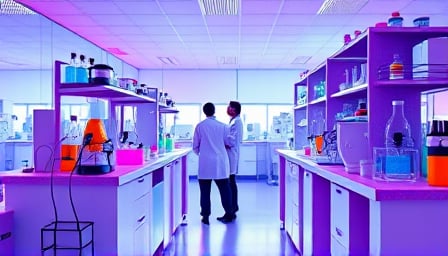Huadong Medicine Co Ltd: A Turning Point in Oncology Innovation
Huadong Medicine Co., Ltd. (ticker 000963), a Chinese healthcare provider headquartered in Hangzhou, has announced a breakthrough in its oncology pipeline that could redefine its strategic trajectory. The company disclosed that its Phase I study of HDM2005—an antibody‑drug conjugate (ADC) targeting the receptor tyrosine kinase‑like orphan receptor 1 (ROR1)—has yielded positive preliminary results in patients with relapsed or refractory B‑cell non‑Hodgkin lymphoma (B‑NHL) and classical Hodgkin lymphoma (cHL). This development arrives at a critical juncture for Huadong, whose market capitalization hovers around CN¥77.7 billion, and whose share price, at 42.55 CN¥ as of September 3, 2025, sits roughly 11 % below its 52‑week high.
The Significance of HDM2005
ROR1 is a cell surface receptor overexpressed in a variety of solid and hematologic malignancies, yet it remains minimally present on normal tissues. This differential expression makes ROR1 an attractive therapeutic target, and ADCs that couple a cytotoxic payload to a ROR1‑specific antibody represent a novel modality with the potential for high efficacy and reduced systemic toxicity. HDM2005 is Huadong’s first Class 1 innovative ADC, developed independently within its R&D arm, and its Phase I data are the first public evidence that the drug is tolerable and biologically active in a hard‑to‑treat patient cohort.
Although the announcement stops short of detailing objective response rates, the language used in the press release—“positive preliminary results” and “demonstrated …”—suggests that the drug has met or exceeded its primary safety endpoints and shown early signs of antitumor activity. For a company whose core products have traditionally been antibiotics, proprietary Chinese medicines, and chemically synthesized drugs, this pivot to advanced biologics signals a decisive shift toward high‑margin innovation.
Market Reactions and Investor Sentiment
Huadong’s stock has displayed a muted reaction so far, trading at a price‑earnings ratio of 20.6, which is modest compared to many of its peers in the health‑care sector. The company’s 52‑week low of 26.96 CN¥ is still well below its current level, indicating that the market may not yet fully price the upside potential of the ADC program. Nonetheless, the announcement has attracted attention from institutional investors, as evidenced by fund managers such as 中欧医疗健康 (ZhongEu Medical Health) and 信立泰 (Xinyi Ta) who have increased their holdings in Huadong. These moves, documented in the mid‑year fund reports on September 4, signal that seasoned investors see value in the company’s expansion into cutting‑edge therapeutics.
Parallel R&D Developments
In the same week, Huadong also addressed regulatory progress on its MB‑102 (瑞玛比嗪注射液) injectable product. According to a statement on Xueqiu, the company is currently reconciling its drug instructions and other registration documents with the China Drug Evaluation Center (CDE). The company has already amended and resubmitted the requisite files, and expects a favorable outcome that will enable production and market launch. The MB‑102 initiative underscores Huadong’s broader strategy to diversify its portfolio beyond traditional small‑molecule drugs and into novel biologics and advanced therapeutics.
Strategic Implications
The dual announcement—positive Phase I results for HDM2005 and active regulatory engagement for MB‑102—reflects a deliberate, multi‑tiered approach to growth. On one front, the ADC pipeline could unlock substantial revenue streams, given the high pricing power of first‑in‑class oncology agents. On another, MB‑102’s eventual approval would reinforce the company’s domestic presence and potentially secure a foothold in the injectable drug market, which has proven resilient even amid global supply chain disruptions.
However, Huadong must navigate several hurdles. First, the transition from a traditional pharmaceutical producer to a biopharmaceutical innovator requires not only scientific validation but also significant capital outlay for clinical development, manufacturing scale‑up, and regulatory compliance. Second, the company’s current assets and cash flow position—while robust enough to support ongoing R&D—may strain if the ADC program demands aggressive Phase II/III expansion. Third, the competitive landscape for ROR1‑targeted ADCs is intensifying, with several global biotechs investing heavily in similar platforms.
Conclusion
Huadong Medicine Co., Ltd. stands at a pivotal crossroads. The early success of HDM2005 offers a glimpse of transformative potential, while the MB‑102 regulatory progress demonstrates operational momentum. For investors, the company presents a compelling case of a traditional player evolving into a modern biopharmaceutical contender. The forthcoming weeks will determine whether the market rewards this strategic pivot, but the current trajectory suggests that Huadong is poised to redefine its value proposition in the Chinese healthcare arena.
